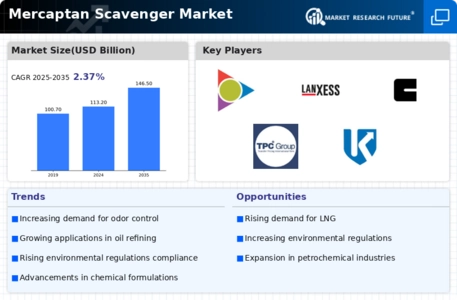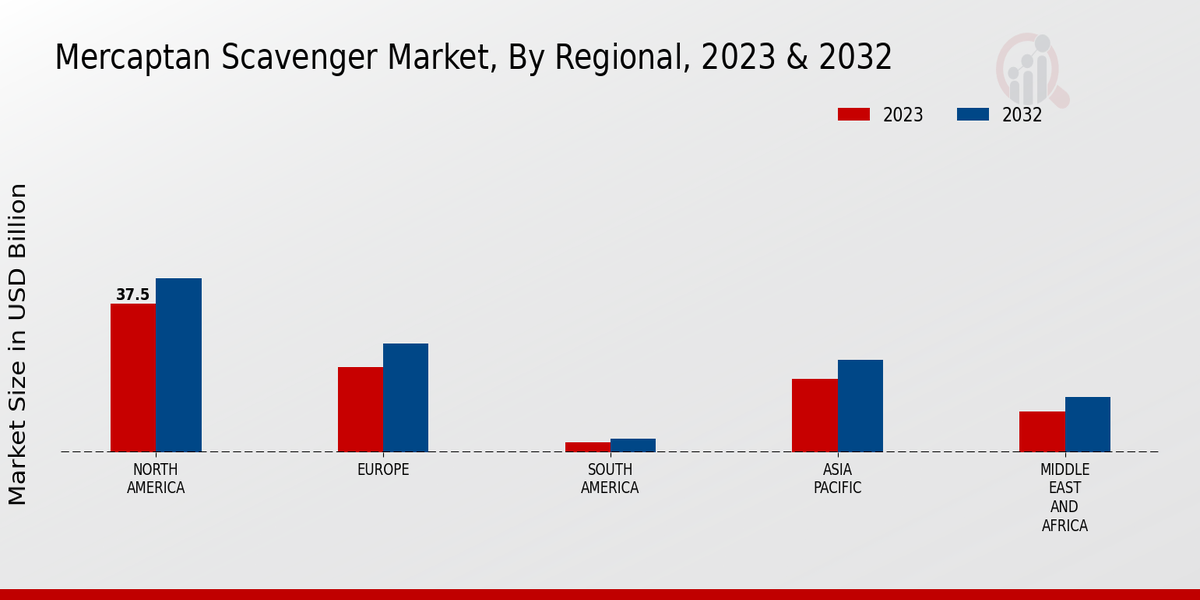Market Growth Projections
The Global Mercaptan Scavenger Market Industry is poised for substantial growth, with projections indicating a market value of 113.2 USD Billion in 2024 and an anticipated increase to 146.5 USD Billion by 2035. This growth trajectory suggests a steady demand for mercaptan scavengers across various sectors, driven by factors such as regulatory compliance, technological advancements, and industrial growth. The market is expected to experience a CAGR of 2.37% from 2025 to 2035, reflecting the ongoing need for effective mercaptan management solutions in an evolving industrial landscape.
Growth in Petrochemical Industry
The petrochemical industry serves as a vital driver for the Global Mercaptan Scavenger Market Industry, as mercaptans are prevalent in various petrochemical processes. The increasing production of petrochemicals, driven by rising consumer demand for plastics and synthetic materials, necessitates effective mercaptan management. As the industry expands, the need for mercaptan scavengers becomes more pronounced, leading to increased market opportunities. The projected growth in the petrochemical sector is expected to significantly contribute to the overall market value, reinforcing the importance of mercaptan scavengers in maintaining product integrity and quality.
Emerging Markets and Industrialization
Emerging markets are playing a crucial role in shaping the Global Mercaptan Scavenger Market Industry. Rapid industrialization in regions such as Asia-Pacific and Latin America is driving the demand for mercaptan scavengers as industries seek to enhance operational efficiency and product quality. The growth of manufacturing sectors in these regions is likely to increase the consumption of mercaptan scavengers, thereby expanding the market. As these economies continue to develop, the demand for effective mercaptan management solutions is expected to rise, presenting significant opportunities for market players.
Increasing Demand from Oil and Gas Sector
The Global Mercaptan Scavenger Market Industry experiences heightened demand due to the oil and gas sector's continuous expansion. Mercaptan scavengers are essential in removing mercaptans, which are sulfur-containing compounds that can cause corrosion and odor issues in petroleum products. As the global oil production is projected to reach approximately 113.2 USD Billion in 2024, the need for effective mercaptan management becomes critical. This trend is likely to drive the market as companies seek to enhance product quality and comply with environmental regulations, thereby fostering a robust growth trajectory in the industry.
Regulatory Compliance and Environmental Concerns
The Global Mercaptan Scavenger Market Industry is significantly influenced by stringent regulatory frameworks aimed at reducing sulfur emissions. Governments worldwide are implementing regulations that necessitate the removal of mercaptans from fuels and other products to mitigate environmental impact. This regulatory pressure compels industries to adopt mercaptan scavengers, which are effective in meeting compliance standards. As a result, the market is expected to grow steadily, with projections indicating a market value of 146.5 USD Billion by 2035. Companies that prioritize compliance are likely to gain a competitive edge, further driving the demand for mercaptan scavengers.
Technological Advancements in Scavenger Formulations
Innovations in the formulation of mercaptan scavengers are propelling the Global Mercaptan Scavenger Market Industry forward. Advanced formulations that enhance efficiency and reduce costs are becoming increasingly available, allowing industries to optimize their operations. For instance, the development of dual-function scavengers that can simultaneously remove mercaptans and other contaminants is gaining traction. This technological evolution not only improves product performance but also aligns with the industry's sustainability goals. As the market continues to evolve, these advancements are likely to attract new investments and drive growth, contributing to a projected CAGR of 2.37% from 2025 to 2035.
















